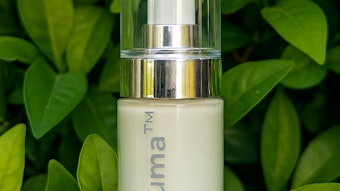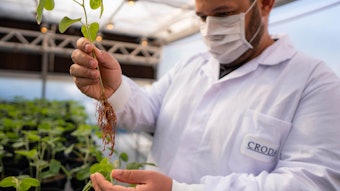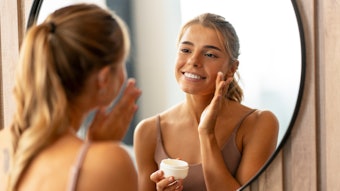
Sunscreen innovators received an exciting "gift" this holiday season: two new SPF test methods were approved by the International Organization for Standardization (ISO) in December 2024. Both are more ethical than current approaches, as they are less invasive to test subjects. One, in fact, omits human subjects altogether and can reportedly reduce analysis from weeks to just days. Both methods also aim to obtain the most reliable and repeatable SPF values yet. Per ISO, they correlate closely with in vivo SPF and in vitro UVA-PF tests, which is critical to the advancement of sun protection — a market anticipated to see a 4.3% CAGR from 2024 and 2031, per Metastat Insight. Here, we provide a brief overview of each method and expert insights about why their approval is so exciting; along with one view that the industry may hesitate before adopting them.
This article is only available to registered users.
Log In to View the Full Article
Sunscreen innovators received an exciting "gift" this holiday season: two new SPF test methods were approved by the International Organization for Standardization (ISO) in December 2024. Both are more ethical than current approaches, as they are less invasive to test subjects. One, in fact, omits human subjects altogether and can reportedly reduce analysis from weeks to just days. Both methods also aim to obtain the most reliable and repeatable SPF values yet. Per ISO, they correlate closely with in vivo SPF and in vitro UVA-PF tests, which is critical to the advancement of sun protection — a market anticipated to see a 4.3% CAGR from 2024 and 2031, per Metastat Insight. Here, we provide a brief overview of each method and expert insights about why their approval is so exciting; along with one view that the industry may hesitate before adopting them.
What is the ISO 23675 Double Plate In vitro SPF Test?
As previously reported, the double plate SPF method (ISO/DIS 23675) is fully in vitro, and reportedly more cost efficient, more reliable and faster than the reference in vivo method (ISO 2444). Per ISO, the 23675 in vitro SPF test is based on UVR transmittance spectroscopy. It reportedly takes a "spectrophotometric measurement of UVR transmission through [the] appropriate UVR-transparent substrates," which can predict in vivo SPF values. Per the organization, the method has revealed its strong reproducibility and correlation with in vivo SPF values.
This method is applicable to sunscreens in the form of emulsions or alcoholic one-phase formulations; it is not approved for loose or compressed powder or stick forms. In addition, the "use of this method is strictly for the determination of a static sun protection factor," ISO noted. "It is not validated for the determination of water resistance properties of a sun protection product."
What is the ISO 23698 HDRS SPF Test?
The hybrid diffuse reflectance spectroscopy (HDRS) method (ISO 23698) combines non-invasive measurements on human skin with in vitro optical measurements. According to ISO, it provides "a non-invasive optical assessment of the protection provided by topically applied sunscreen products, as measured in situ on human skin as used by consumers, without requiring physiological responses and causing no physical harm to the test subject."
ISO adds that by combining full spectrum in vitro spectroscopic measurements with optical measurements of the sunscreen transmission in the UVA on human skin, "a hybrid spectrum is derived that provides full assessment of both magnitude and breadth of sunscreen protection in both the UVB and UVA regions of the sun’s spectrum, correlating closely with in vivo SPF and in vitro UVA-PF test results..."
This method thus characterizes the sun protection factor (SPF), UVA protection factor (UVA-PF) and critical wavelength (CW) of sunscreen products without requiring biological responses. The method has reportedly been validated for emulsions and single-phase products.
Why We Need Improved SPF Tests
Historically, per ISO, the sun protection factor (SPF) of a product has been measured in vivo (method ISO 24444) to communicate the level of protection offered by sunscreens based on human erythema measurements and the Persistent Pigment Darkening (PPD) test. However, invasive tests in humans are ethically problematic, time-consuming, technically challenging and costly.
As such, the development of improved SPF test methods have long been sought for such benefits as:
- not using human testing, or doing so non-invasively;
- improving speed and cost;
- improving repeatability and reproducibility;
- providing testing sensitivity and accuracy as reliable as existing invasive methods;
- eliminating technically challenging procedures such as MED determination; and
- using methods that are more amenable to continuous improvement, among others.
What the New SPF Tests Mean for the Industry
"After decades of development work, the ISO/TC 217 technical committee is proud to launch two alternative test methods for sunscreens: ISO 23675 and ISO 23698," wrote Uli Osterwalder, chair of ISO/TC 217 Cosmetics.
Sébastien Miksa, general manager of Weneos who helped to draft ISO 23675, previously shared, "This news is exciting because it represents a major advancement in sun protection testing methods, which will improve the ethical [nature], speed, cost-efficiency and reliability of SPF measurements compared to the in vivo reference method."
Prof. Marc Pissavini, Ph.D., chairman of the Cosmetics Europe Sun Protection Methodology Task Force, also previously expressed his support, in particular for the double plate test method. "For the first time, we have a full in vitro method for SPF evaluation (ISO 23675) and this method uses a non-human model, [making it] more ethical [and not subject to] skin color limitation."
He furthered that it improves the repeatability and reproduction of measurements, and significantly improves speed and cost. "The impact on product development with the ISO 23675 in vitro SPF method will be considerable," Pissavini continued. "The analysis time will be reduced from several weeks to a few days, and the cost will drop from several thousand euros or dollars to just a few hundred."
Adopting the New SPF Test Methods
While the approved ISO method is international, its application is voluntary, so its adoption will depend on each country; though Pissavini felt fairly positive about 23675's reception. "It is very likely that [it] will be quickly be accepted everywhere except in the USA and Japan," he noted.
Miksa previously stated that these alternative methods will be directly accepted in the European Union. He noted that this is because the commission's recommendation for testing sunscreens "clearly states that preference should be given to in vitro testing methods that provide an equivalent level of UVB protection."
Osterwalder believes the new tests are game-changers, but he is less confident about the speed with which they will be adopted. "Both new alternative methods have their merits, but it will depend on the country/region how quickly these new methods are adopted. Australia, for example, is just adopting the 2019 revised version of gold standard ISO 24444, and when the U.S. FDA (Food and Drug Administration) will ever adopt an ISO standard is anyone's guess.
"The first tests using the new methods will be carried out in Europe. It will certainly take a transitional period before the new methods are established. The aim is to obtain the most reliable SPF values at a reasonable cost. To do this, it is best to use at least two methods," concluded Osterwalder.
A U.S. Perspective on SPF Testing and ISO 23675
Photoprotection expert Carl D'Ruiz, a senior business development manager in beauty and care at DSM-Firmenich in Princeton, NJ, USA, commented, "...ISO 23675 provides a non-invasive, in vitro alternative for SPF testing, eliminating the need for human testing while delivering reproducible and reliable results. It aligns with global trends favoring ethical and sustainable practices and has gained acceptance in regions such as the European Union (EU), where sunscreens are regulated as cosmetics. The EU prioritizes in vitro methods that meet stringent efficacy requirements while reducing reliance on animal or human testing.
"Unfortunately, ISO 23675 is not currently approved for use in U.S. FDA-regulated OTC sunscreens, as FDA regulations (21 CFR 201.327(i)) still mandate in vivo human testing for SPF determination. To adopt these alternative methods in the U.S., the following steps would be required:
- Validation Studies: Demonstrate equivalency or superiority to the FDA's in vivo method.
- Regulatory Approval: Submit data through formal FDA processes, such as an OMOR or Citizen Petition.
- Industry Advocacy: Collaborate to harmonize U.S. regulations with global standards.
"While ISO 23675 and ... ISO 23698 present significant advancements for global cosmetic sunscreen products, their application in FDA-regulated OTC sunscreen drug products will require additional validation and regulatory approval in the U.S. Nevertheless, these methodologies mark a major leap forward in sunscreen testing, fostering more ethical, efficient, and reliable assessments of sunscreen efficacy worldwide."
Transforming Lives for a Healthier Future
The implementation of the tests has yet to be seen but Pissavini remains optimistic, especially for the fully in vitro method. "Some had eagerly awaited it for years, while others approached it with apprehension — but it’s finally here: the in vitro double plate SPF method has been officially published!" Pissavini celebrated. "Recognized under the 2006 European Commission guidelines, this groundbreaking method is now part of the new ISO standard, ISO 23675, dedicated to solar testing of cosmetic products.
"This achievement marks a major breakthrough with the introduction of innovative alternative method for SPF determination," Pissavini continued. "While the in vivo method (ISO 24444) remains available, the choice of methodology can now adapt to country-specific requirements and regulatory preferences, providing enhanced flexibility and alignment with local needs.
"As the first fully validated, 100% non-human SPF test to earn recognition as an international ISO standard, this revolutionary method represents a remarkable advancement for both science and society. Thanks to its numerous improvements — being faster, more cost-effective, safer and highly reproducible — it holds the potential to transform lives by protecting countless individuals from the devastating impacts of skin cancer, paving the way for a brighter, healthier future."
Alain Khaiat, Ph.D., president of Seers Consulting, also shared his enthusiasm for the newly approved in vitro method. Khaiat was chairman of the ISO committee from 2014 to 2019, so he can attest to the "superb work done by all the experts involved," as he put it.
"[It took a] lot of sweat, a lot of work and some tough negotiating, but at the end, [this is] a very useful standard that will save hundreds of healthy volunteers from unnecessary irradiation. Congratulations to all those involved!"
Cosmetic chemist, industry expert and influencer Michelle Wong, Ph.D. (@labmuffin), added, "I think it's great to have safer methods that should give more reproducible SPF values, and reduce the panic that happens every time consumer groups announce a whole bunch of sunscreens failing their tests. [It will] help restore trust in a very effective and safe anti-cancer product!"










